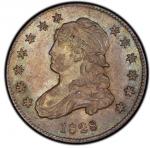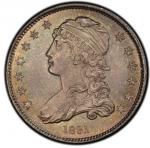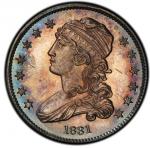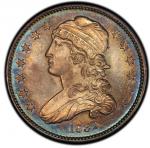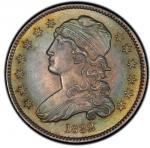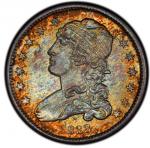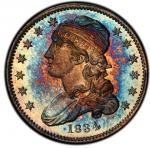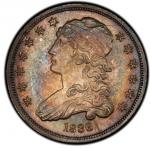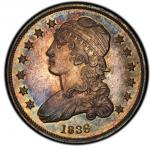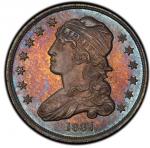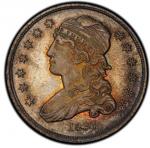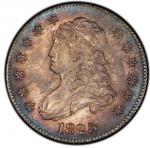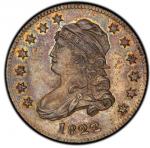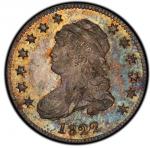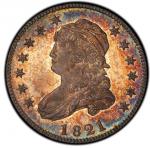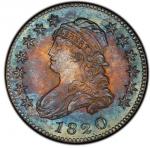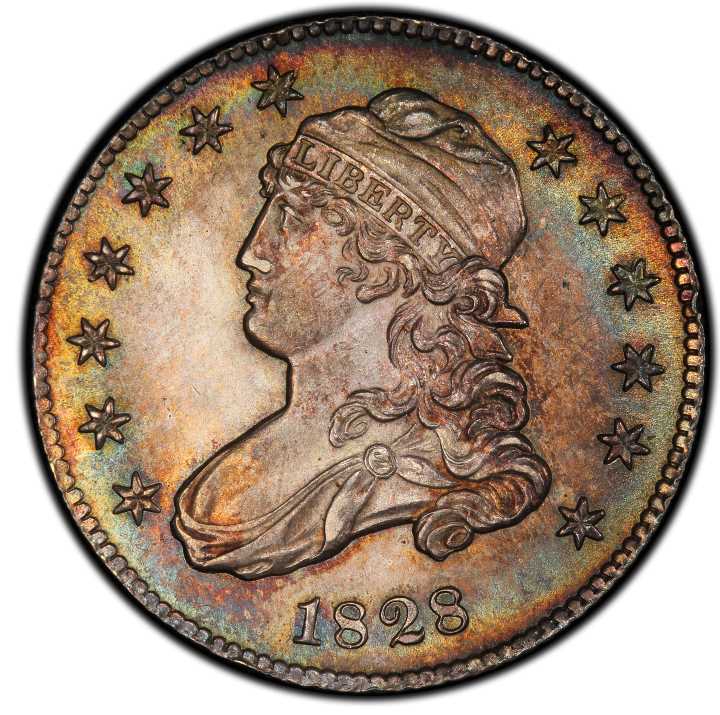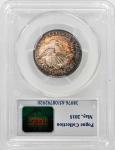Usually in low grades, prohibitively rare in VF. -- Walter BreenA distinctive type among the Flowing Hair halves, showing a smaller, finer portrait bust of Liberty. Only three obverse dies among the 19 used in 1795 utilized this head puncheon, combining with two different reverses to make three total die marriages. All of those die marriages are scarce in any grade, and all are extremely rare in high grade. This is the only known Mint State coin, and what a lovely one it is. Cartwheel luster encircles frosty, original surfaces. The obverse is golden gray, even at arms length, but shows a range of fine variations on that theme up close. The reverse is deeper gold with areas of light silver and highlights of lavender and rose. Though some fine hairlines are seen, no contact marks are present and the visual appeal far surpasses the grade level. A subtle scratch follows the curvature of the central obverse device where the neck meets the shoulder, and a shallow abrasion arcs from the talon on the left across the wing to the wreath above the first A in AMERICA. Some central adjustment marks are barely noticeable on the obverse, though their impact manifests in the soft strike on the eagles head, chest, and wing tops. Other examples from these dies show similar areas of softness, but considering their grade it could just as easily be wear on those coins. A fine reverse die crack starts at the rim, crosses E of UNITED and runs along the wreath, before arcing through the ribbon end on its way back to the rim near 6:00. This coins natural and unsophisticated appearance, along with its ancient provenance, gives it a wonderful appeal.Few pedigrees leave collectors more breathless than Lord St. Oswald, even as the fantastic story of an English peer visiting the first United States Mint in 1795 was found to be based on speculation. The facts are just as evocative as the tall tale, namely that a box of unimportant coins found in the possession of a member of the gentry in the early 1960s included some of the most important early United States coins ever discovered, all dating from 1794 and 1795, clearly kept together since nearly the time of their mintage. Kept loose and unappreciated, totally unstudied, the coins caused a sensation when they appeared at auction in London in 1964. Among their number was a small quantity of cents that maintained vivid mint color, two high grade examples of the famous 1794 dollar (one of which is in the Pogue Collection), and this coin, a 1795 Small Head half dollar, a rarity in any grade but an astounding find in Mint State.While the story may never be known, someone visited Philadelphia in 1795 and brought back coins as souvenirs. Those coins, thought trivial at the time and considered such as late as 1964, are a veritable time capsule that has captured the imagination of collectors ever since. Only one other Lord St. Oswald half dollar has traded hands in the modern era, a 1795 O-112 graded NGC MS-65, once offered in our 1973 Reed Hawn Sale, that brought $92,400 in February 1995.John Smith Gardner, hired as an assistant engraver at the Mint in November 1794, has been named as the likely engraver of the Small Head design; it is distinctive enough to assume that a different hand created it than accomplished the standard device used on the other 16 obverses. There has never been a whisper of the existence of another Mint State specimen; in fact, PCGS has certified just three at the About Uncirculated level. As noted, the Pogue coin is the single finest example of this work, the specimen against which all others are judged.

